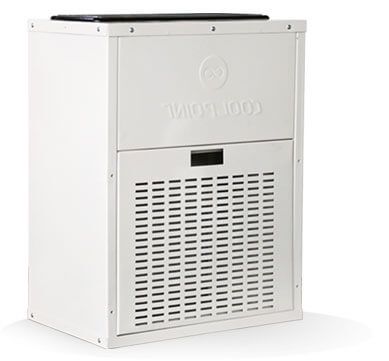The air quality in the major cities of Pakistan has deteriorated to hazardous levels, putting an additional burden on the fragile healthcare system amid a surge in coronavirus deaths and new infections. The Air Quality Index at one point rose to 750 in Lahore, Punjab – about 12 times the recommended level. In this scenario, air purifiers prove to be a respite from breathing in toxic air. However, for most people, buying an air purifier is very confusing. HEPA filters, negative ionizers, electrostatic precipitators – the terminology alone sounds like a foreign language! Not to worry though, we have broken down the whole, convoluted world of air purifiers into one, straightforward buying guide to choosing the best air purifier.
Air Purifier based on Area/Room Size
The size if your room is an important factor for choosing a suitable air purifier. Bigger spaces will need larger air purifiers so make sure you buy an air purifier that can operate in a space that is 20-40% larger than the room for the best performance. The choice of the air purifier also depends on the type of room. For example, air filtering efficiency, air purification technology, noise level, electricity costs, size and look of the air purifier may vary from room to room.
Levels and Type of Filters
There are different technologies that purifiers work on. However, the most effective and widely used technology is High-efficiency Particulate Arrestance air filtration. We know that’s a mouthful so we will be using the popular acronym, HEPA, from now on. So, let’s understand how HEPA air purifiers work.
High-Efficiency Particulate Arrestance (HEPA): The simplest form of filtration is to use a material with holes that are big enough to trap some particles and small enough to let through others. That is how a normal sieve works. An air filter is also like a sieve that traps particles in the ambient air. But how do you catch particles that are floating in the air? Well, by making a very fine filter with holes small enough to let air through but trap everything else. That’s what we call a HEPA filter. It can trap almost 99.97% of the dust particles and polluting agents in the air.
However, there is a catch!
The holes in a HEPA filter are so small that they will simply get clogged by larger dust particles that get pulled in by the air purifier’s fan. Therefore, for a HEPA filter to run efficiently, a pre-filter is needed. A Micron Mesh filter to prevent heavy dust.
At the 3rd level comes Carbon Filter/Charcoal Layer which helps in removal of smoke and chemical fumes.
CADR Ratings
CADR stands for Clean Air Delivery Rate and is the measurement for the volume of filtered air delivered by an air purifier. It is given in three measurements: one for pollen, one for tobacco smoke and one for the dust. The higher the CADR number, the faster the unit filters the air. Before making a purchase, look for the CADR as higher the CADR, higher will be the efficiency of the air purifier for a given room.
Customer Service and Warranty
Every air purifier will require changes after 12 to 18 months. Make sure the after sale service of your product is sound so that the replacement is quick and easy. Also, your air purifier is an investment for your home so make sure you have long warranty on the product to protect from manufacturing defects.
About us
Coolpoint (PVT.) LTD. is a turn-key solution based entity that not only has its own well-experienced workforce of planners, engineers, and technicians, it also has very strong liaisons with many internationally certified OEMS and official distributions such as CHIGO, TICA, NURDIL, HAS ELEVATOR, etc. to cover all the possible areas of the development sector.
We believe in providing immaculate After-Sales services with high-speed execution by ensuring 24/7 availability, focusing not on the ‘business’- but the ‘relationship.





